Orange Rum Castagnole
These tasty Castagnole are have the delicate flavor of rum and orange. The perfect way to add some Italian Carnavale to your celebration. They can be fried or baked. So good you can’t stop at one!
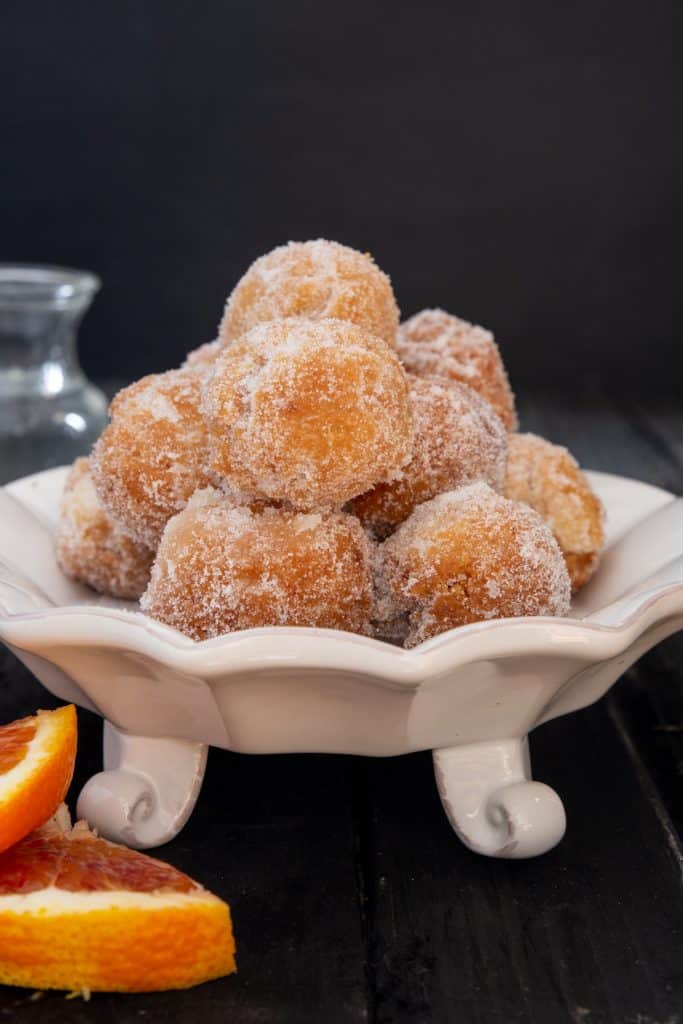
And yes it is that time of year again, every grocery store, coffee bar and of course bakery I enter is selling Castagnole and Chiacchiere! Naturally it is virtually impossible to leave without buying a few!
Recipe Ingredients
- Flour – all purpose flour
- Butter – softened salted butter
- Sugar – granulate sugar
- Egg – room temperature
- Baking powder
- Rum – dark or light rum
- Zest orange
What is Carnevale?
Carnevale (Carnival) is a festival that is celebrated in Countries celebrating the Catholic Faith. There is no fixed date since the period it is held depends on when Easter falls. However, it is always during February or March. Lasting approximately two weeks until Shrove Tuesday with lent following right after.
How to make Rum Castagnole
In a large bowl whisk together the flour, salt, sugar, baking powder and zest.
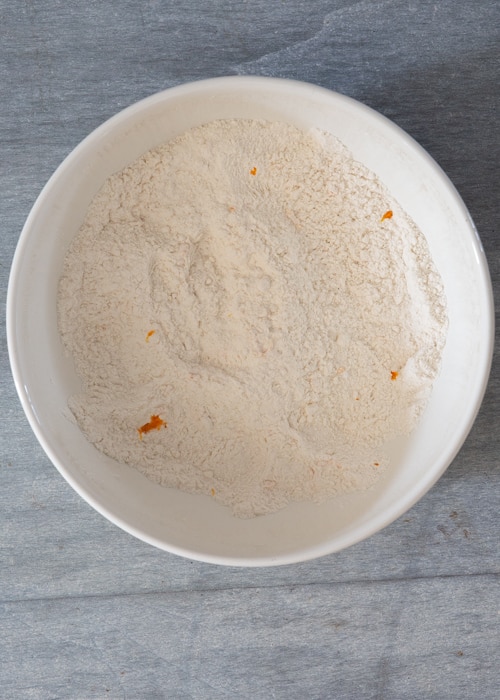
Make a well in the center and add the butter, egg and rum, mix with a fork until almost combined.

Move to a lightly floured flat surface and knead into a soft smooth dough, don’t over knead. Wrap the dough in plastic wrap and refrigerate for 30 minutes.
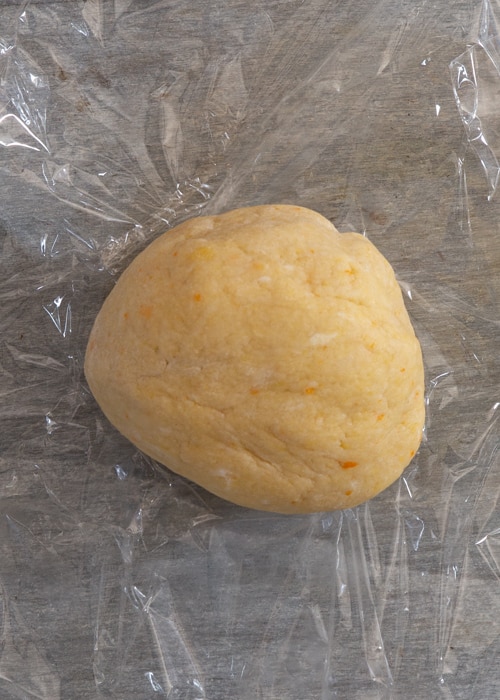
Remove the dough from the fridge and form into small balls about the size of small chestnuts.
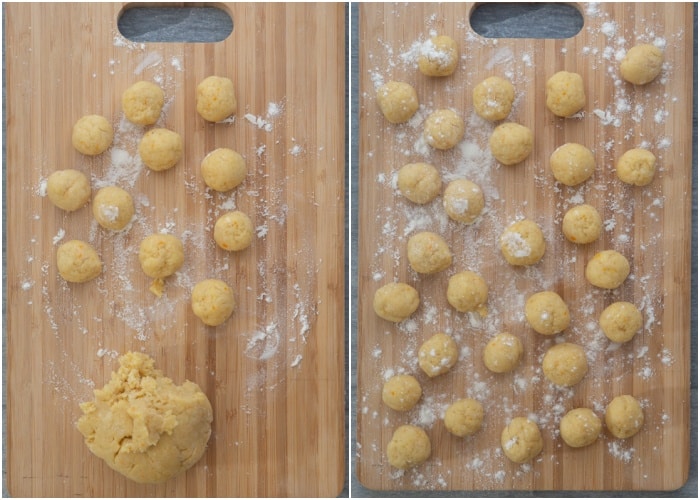
In a medium pot add about 2 inches of oil and heat to 300-325F, once the correct temperature is reached, depending on the size of your pot add the dough balls in batches, be sure not to crowd them.
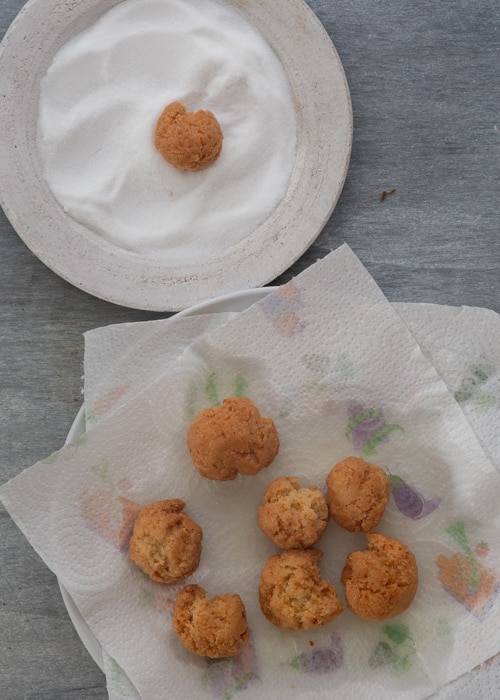
Turn them often until they are golden brown all over. Remove the castagnole with a slotted spoon and place on a kitchen paper/paper towel lined plate to help drain excess oil.
While still warm roll in sugar and serve!

Tips for deep frying
The best oil to use are peanut, sunflower or canola oils. Be sure to heat the oil to a temperature of 300-325F (150-160C). Try to keep it as close to this temperature as possible.
Lower than this and they will be soggy and not cooked, too high and they will cook too much on the outside and not enough on the inside.
If you happen to be deep frying a lot of items, it may be best to change the oil half way through.
What does Castagnole mean?
The direct translation is “chestnut”, which is the size the dough balls should be before frying, because once they start to fry they will expand in size. They are or also known as sweet dough balls or fried dough balls, they are a delicious sweet treat.
Where did they originate
Castagnole also known as Favette originated in the Region of Rome although they are popular throughout Italy. And of course every region has added their own signature to them. From adding different spices to even filling them after they are made.
Are fried better than baked
I am going to say yes fried are better. In my opinion they taste better and they are softer. Baked are good too, but remember they can’t be rolled in granulated sugar because the sugar won’t stick, so they should be dusted in powdered sugar instead.
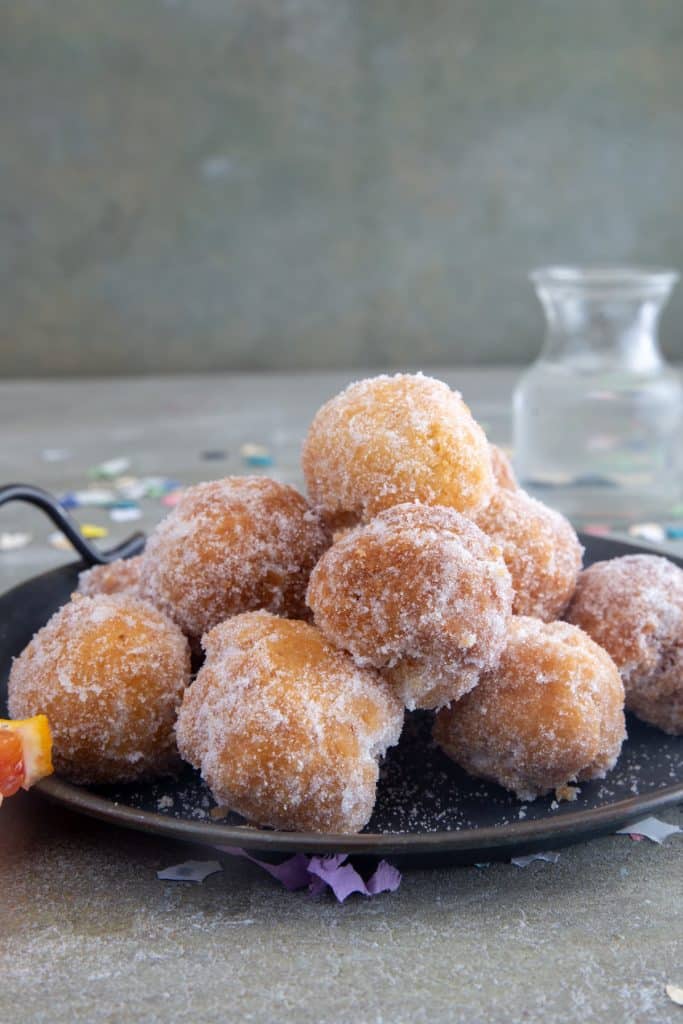
Can they be baked?
Yes they can be baked, place the formed balls on a parchment paper lined cookie sheet and bake in a pre-heated 350F (180C) oven for approximately 12-15 minutes. Instead of rolling in sugar, dust the cooled castagnole with icing/powdered sugar.
How to serve Castagnole
In Italy they can be served for dessert, as a snack and are especially popular with get togethers. During this period instead of bringing pastries as a guest a large tray of Castagnole and Frappe are brought!
Typical Carnevale Food
- Frappe / Chiachierre -These are crunchy and delicate thin sheets of pastry that are usually deep fried and dusted with powdered sugar
- Sweet Ravioli – A slightly sweet dough filled with a ricotta filling and usually deep fried.
- Venetian Sweet Frittelle – Soft and crispy fried balls that are usually filled with an Italian Pastry cream.
- Struffoli – Are a Neapolitan dish made of deep fried balls of sweet dough.
- Tortelli – Known as fried cakes, as they are frying a hole is created inside where you can stuff them with your favourite filling if desired, best eaten warm rolled in sugar.
How to store them
This is the type of fried food that should be eaten immediately they day they are made, the longer they sit out the drier they will become. Although baked will keep in an airtight container for up to 3 days at room temperature.
So if you are looking for a tradition Italian treat whether you celebrate Carnevale or not, I hope you try these Orange Rum Castagnole and let me know what you think. Enjoy!
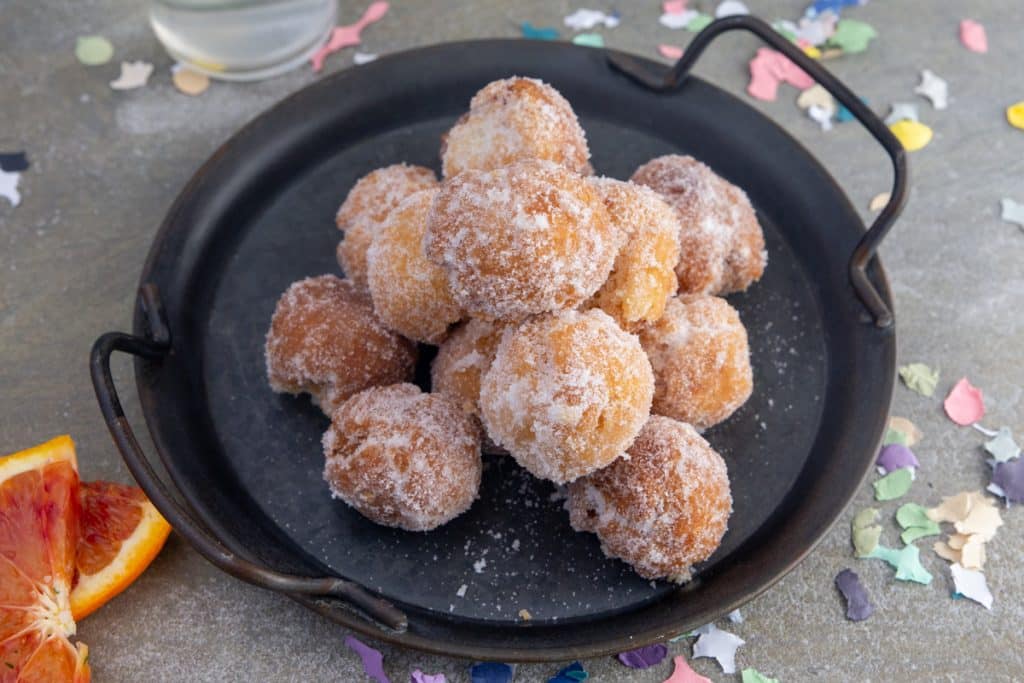
More Delicious Carnevale Recipes
- Italian Bake Chacchiere
- Italian Carnival Sprinkle Cookies
- Cassatelle with Ricotta
- Ricotta Castagnole

Orange Rum Castagnole
Ingredients
- 1½ cups all purpose flour
- 1 pinch salt*
- ¼ cup granulated sugar
- 1 teaspoon baking powder
- 1 zest of an orange
- ¼ cup butter softened and cut into pieces
- 1 large egg room temperature
- 2 tablespoons rum (light or dark) good quality
*If using unsalted butter then add ¼ teaspoon salt.
EXTRAS
- ¼-⅓ cup granulated sugar for rolling
Instructions
- In a large bowl whisk together the flour, salt, sugar, baking powder and zest.
- Make a well in the center and add the butter, egg and rum, mix with a fork until almost combined.
- Move to a lightly floured flat surface and knead into a soft smooth dough, don’t over knead. If the dough is too sticky then add a bit more flour, too dry then add a bit more butter.
- Wrap the dough in plastic wrap and refrigerate for 30 minutes.
- Remove the dough from the fridge and form into small balls about the size of small chestnuts.
- In a medium pot add about 2 inches of vegetable oil and heat to 300-325F (150-162C), once the correct temperature is reached, depending on the size of your pot add the dough balls in batches, be sure not to crowd them.
- Turn them often until they are golden brown all over, approximately 3 minutes in total. Remove the castagnole with a slotted spoon and place on a kitchen paper/paper towel lined plate to help drain excess oil. While still warm roll in sugar and serve! Enjoy.